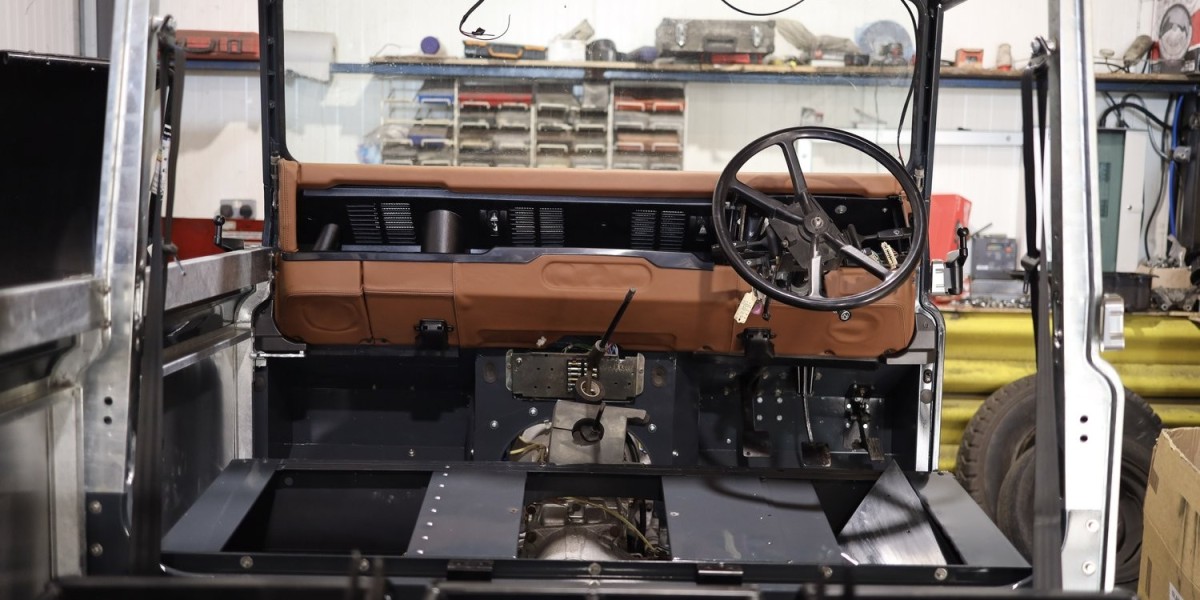The Land Rover Defender has long been an automotive icon, known for its rugged design and off-road capabilities. In recent years, as the automotive industry has shifted towards sustainability, enthusiasts and manufacturers alike have explored the possibility of electric conversions for classic vehicles. One such endeavor involves rebuilding the Land Rover Defender with an electric powertrain, combining the timeless appeal of the Defender with modern eco-friendly technology.
The Vision:
The vision behind rebuilding the electric Land Rover Defender is to preserve the classic design and spirit of the original while embracing the advancements in electric mobility. This project aims to create a vehicle that not only pays homage to the Defender's heritage but also sets a new standard for sustainable and high-performance off-road driving.
Conversion Process:
Converting a traditional Land Rover Defender into an electric powerhouse involves several key steps:
Removing the Internal Combustion Engine (ICE):
The first step is to carefully remove the original internal combustion engine, transmission, and associated components. This creates space for the new electric powertrain.
Installing the Electric Motor:
A high-performance electric motor is then installed in place of the traditional engine. This motor provides instant torque, ensuring the electric Defender maintains its off-road capabilities.
Battery Integration:
One of the critical components of an electric conversion is the battery system. High-capacity batteries are strategically placed to maintain the vehicle's balance and center of gravity while providing ample range for both on- and off-road adventures.
Upgrading Suspension and Chassis:
To accommodate the added weight of the batteries and electric motor, the suspension and chassis may need upgrades. This ensures that the electric Defender maintains its legendary stability and durability.
Implementing Regenerative Braking:
Regenerative braking technology is integrated to capture and store energy during deceleration, further enhancing the vehicle's overall efficiency.
Interior and Exterior Refinement:
While the focus is on the electrification process, attention is also given to the interior and exterior. Upgrades may include modern infotainment systems, climate control, and subtle design tweaks to complement the electric transformation.
Benefits of Electric Conversion:
Environmental Friendliness:
By converting the Defender to electric power, the vehicle becomes more environmentally friendly, producing zero tailpipe emissions and reducing its carbon footprint.
Maintaining Off-Road Prowess:
The electric Defender retains its off-road capabilities, thanks to the instantaneous torque delivery from the electric motor and the adaptability of electric power to various terrains.
Lower Operating Costs:
Electric vehicles generally have lower operating costs than their traditional counterparts. With fewer moving parts, maintenance requirements are reduced, contributing to long-term savings.
Conclusion:
The rebuilding of the electric Land Rover Defender is a testament to the ongoing evolution of classic vehicles in the face of environmental consciousness. This project combines the nostalgia of the Defender with cutting-edge electric technology, offering a sustainable and thrilling driving experience. As automotive enthusiasts and environmental advocates alike embrace this hybrid of the past and the future, the electric Defender stands as a symbol of innovation and respect for automotive heritage.








